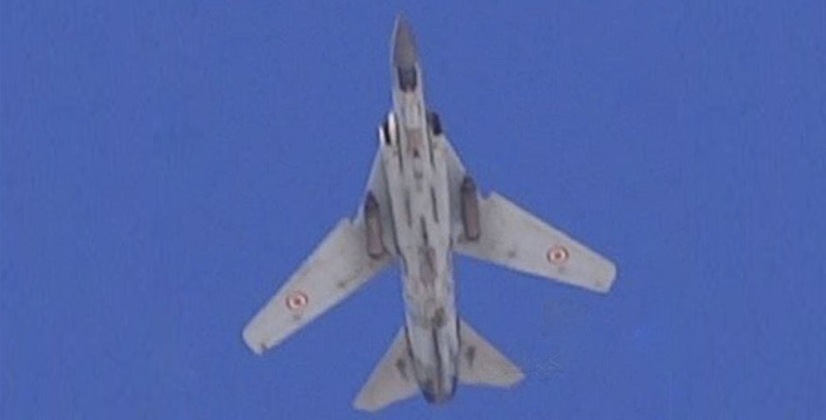News
The Last Ever MiG-23 Sale: Why Syria Still Wanted These Cold War Era Fighters From Belarus So Recently

Entering service in 1970, the MiG-23 Flogger variable swept wing fighter remained in production in the Soviet Union until 1985, with its derivative built for ground attack roles the MiG-27 being built for nine years longer until 1994 to meet export orders from India. While initially a troubled fighter which still relied on avionics from its predecessor the MiG-21, by the mid-late 1970s the MiG-23 had evolved into a highly potent single engine platform of which the Soviet Military alone fielded over 2000. Differences between earlier and later variants were significant, leading them to be considered by many as almost entirely different aircraft, with new wings, materials, sensors, and weaponry being among the changes. The fighter had impressed Israeli operators who acquired a single airframe through a Syrian defection, and proved very potent during the South African Border War when flown by the Cuban Air Force against South African Mirage F1s.
The primary issue with the MiG-23, however, was that particularly from the 1980s it was not seen as cost effective. The new fourth generation MiG-29 which entered service from 1982 had a far superior performance in almost all parameters, with the improvements seen to more than compensate for the relatively modest advantage in operational costs favouring the MiG-23. The older MiG-21 meanwhile, modernised with third or fourth generation avionics, was significantly cheaper and easier to operate with very low maintenance needs meaning it was favoured as a lower end complement to the MiG-29. Sitting in between the two, the MiG-23 was often phased out in favour of one or the other depending on the budget and requirements of its operator.
As Soviet successor states moved to rapidly contract their fighter fleets after the superpower’s disintegration in 1991, the Syrian Air Force emerged as the largest remaining MiG-23 operator with an estimated 150 in service. As the country ceased receiving MiG-29s at favourable prices from the USSR or Soviet aid, and its top end combat jet the heavyweight MiG-25 interceptor’s extremely high operational costs made creating more units unviable, Syria moved to expand its MiG-23 fleet by acquiring more of the latest MiG-23MLD variant. The former Soviet Air Force aircraft, which had been forward deployed near its frontlines with NATO, were purchased from Belarus which had quickly retired the class after inheriting them in 1991. A contract for 33 of the aircraft was signed in 2008 with all airframes delivered that year after light refurbishment.
Despite its advanced capabilities, the MiG-23 would not be favoured for operations during Syrian counterinsurgency operators from 2011, with the MiG-21 prized for its ability to fly multiple sorties daily at a very low cost dropping unguided bombs on insurgent positions. The older MiG-23BN variant, meanwhile, was better suited to air to ground operators. This left the MiG-23MLD, alongside higher end MiG-29s and MiG-25s, to be reserved in the case of a large scale attack by an enemy state actor. Such attacks were considered by the Barak Obama administration and its European counterparts in 2013 – an effective total war on Syria seeking to destroy its military capabilities and overthrow its government – but with this never materialising those units allocated air defence duties were not deployed for combat. The strained nature of the country’s defences have meant that smaller incursions have not been met with its fighter fleet so far.
Syria remains the largest MiG-23 operator in the world, although the fighter’s importance has diminished as it began to receive MiG-29SMT fighters from Russia as aid in 2020. The fighter nevertheless took part in exercises from January 2022 alongside the Russian Air Force simulating defence of Syrian airspace, which is very frequently violated by Israeli and Turkish attacks. Although the fighter has an impressive flight performance, and its sensors are on par with many fourth generation fighters including early F-16s, the combat potential of the MiG-23 is limited by the age of its air to air armaments with the integration of modern R-27 or R-77s in the 1990s never materialising as Russian attentions turned away from the aircraft. Should Syria invest in modernising the fighters’ armaments, and possibly their avionics and sensors, they would represent a potent asset for air defence duties able to better threaten fourth generation challengers, particularly Turkish F-16s which lack the latest air to air missiles themselves. The fighter remains the fastest and highest flying of any single engine design, and can perform very tight turns with its variable swept wings, although in an era where avionics and missile armaments increasingly matter at least as much if not more than flight performance the fleet will remain at a disadvantage without modernisation.













